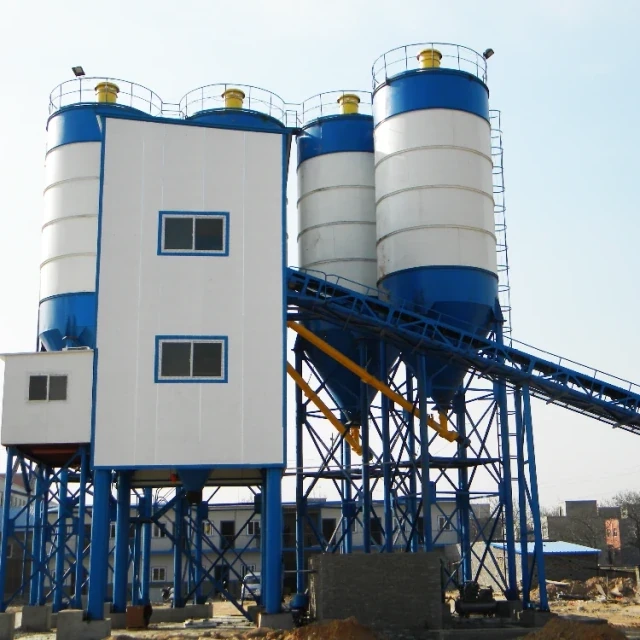Introduction
Moisture-induced caking in cement silos isn’t just a nuisance—it’s a costly operational hazard. This guide delivers proven methods to combat caking, from advanced moisture control to modern cleaning tools, helping you avoid downtime and preserve material quality. Backed by industry insights, we’ll explore why caking happens, how to remove it efficiently, and—most critically—how to prevent it long-term.
Cement Silo Caking: Causes and Risks
The Science Behind Moisture-Induced Caking
When moisture infiltrates cement silos, it triggers hydration reactions—the same process that hardens concrete. Even small amounts of humidity can cause particles to clump, forming stubborn cakes. Key contributors include:
- Condensation: Temperature fluctuations create "sweating" inside silos.
- Ambient humidity: Coastal or rainy regions face higher risks.
- Material contamination: Wet aggregates or improper storage accelerate caking.
Ever wondered why some silos cake faster than others? The answer often lies in airflow design and material composition.
Long-Term Risks of Poor Maintenance
Ignoring caking leads to:
- Structural stress: Uneven material flow strains silo walls.
- Costly downtime: Manual removal halts production for hours.
- Material waste: Up to 15% of cement can solidify into unrecoverable cake (industry estimates).
Proactive Caking Removal Techniques
Modern Tools Beyond Hammers and Shovels
Forget brute force—today’s solutions prioritize efficiency:
- Pneumatic cleaners: Use controlled air pulses to dislodge cakes without damaging silo liners.
- Vibratory systems: Install internal vibrators to break up clumps during discharge.
- Winch-assisted tools: Garlway’s rotary cleaners, for example, combine torque and reach for hard-to-access areas.
Selecting Effective Cleaning Agents
Chemical cleaners dissolve cakes but require caution:
- Citric acid-based solutions: Safe for most liners and eco-friendly.
- Avoid abrasives: Harsh scrubbing erodes protective coatings.
Comprehensive Moisture Prevention Strategies
Silo Coatings and Desiccant Systems
- Epoxy linings: Create moisture barriers; reapply every 3–5 years.
- Desiccant bags: Place silica gel packs near vents to absorb ambient humidity.
Environmental Controls and Monitoring
- Humidity sensors: Install real-time monitors with alerts for spikes.
- Heated air systems: Circulate warm air to prevent condensation during cold snaps.
Think of your silo like a climate-controlled warehouse—precision matters.
Lessons from Industry Case Studies
Costly Failures Due to Neglect
- A Midwest plant lost $220,000 in material and labor after a 20-ton cake collapsed, jamming the discharge system.
Success Stories with Preventive Maintenance
- A coastal facility reduced caking by 90% by combining epoxy coatings with weekly moisture audits.
Conclusion: Actionable Steps to Implement Today
- Audit your silos: Check for moisture ingress points (vents, seams).
- Upgrade tools: Invest in vibration or winch-assisted cleaners like Garlway’s systems.
- Schedule coatings: Reapply protective linings before the rainy season.
By treating moisture as the root cause—not just the symptom—you’ll extend silo life and keep cement flowing smoothly.
Related Products
- HZS75 Concrete Batching Plant Cement Mixer Price Concrete Mixer Bunnings Mixing Plant
- HZS180 Ready Mix Concrete Plant for Foundations with Sand and Cement
- Portable Electric Small Cement Mixer Concrete Machine
- JW1000 Mobile Cement Mixer Concrete Mixer Truck and Batching Plant
- JZC500 Large Cement Mixer Machine Price for Concrete Mix
Related Articles
- How to Prevent Equipment Failure in Concrete Mixing Stations: A Safety Inspector’s Guide
- How to Operate Concrete Mixing Stations in Winter: Protecting Equipment and Ensuring Quality
- How to Prevent Water Supply Freezing in Concrete Mixing Stations: Winter-Proof Strategies
- How to Protect Concrete Mixing Stations From Extreme Weather Damage
- Optimizing Concrete Plant Storage: How to Balance Capacity, Compliance, and Costs




















